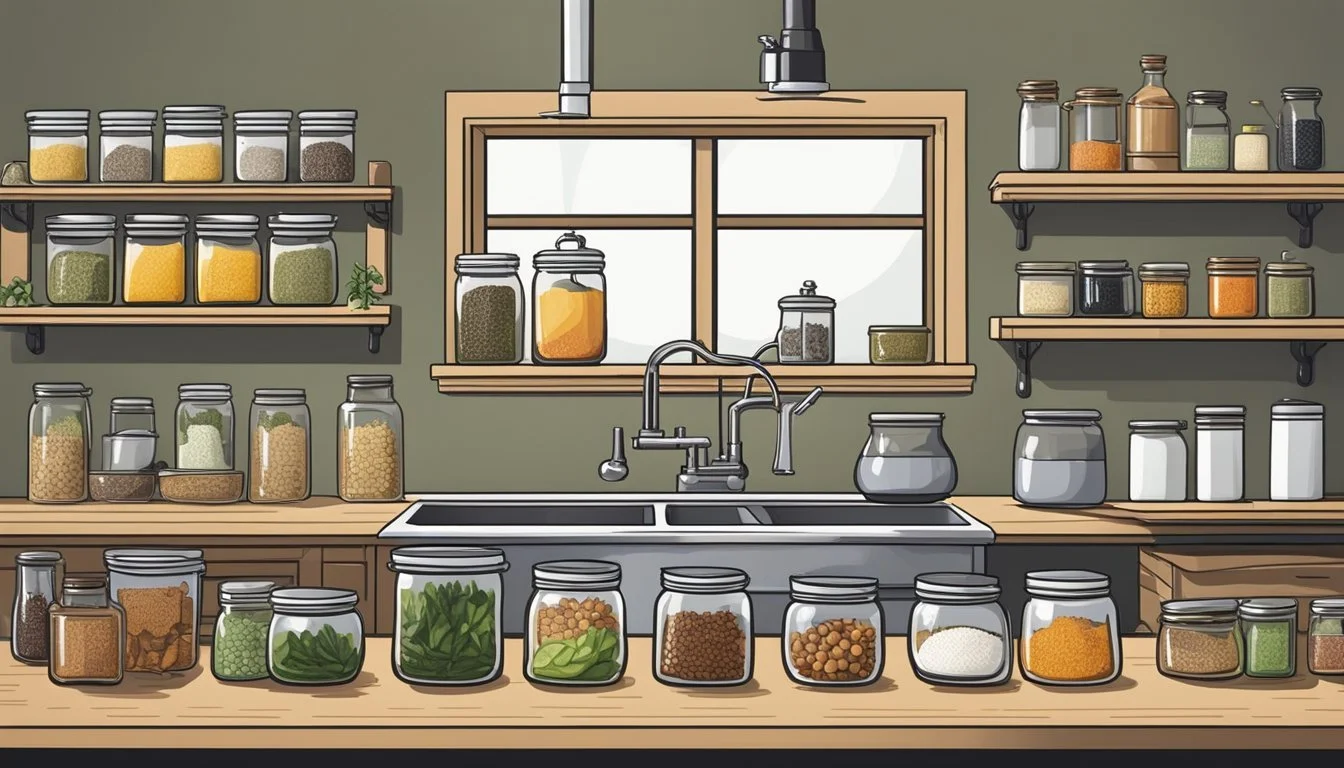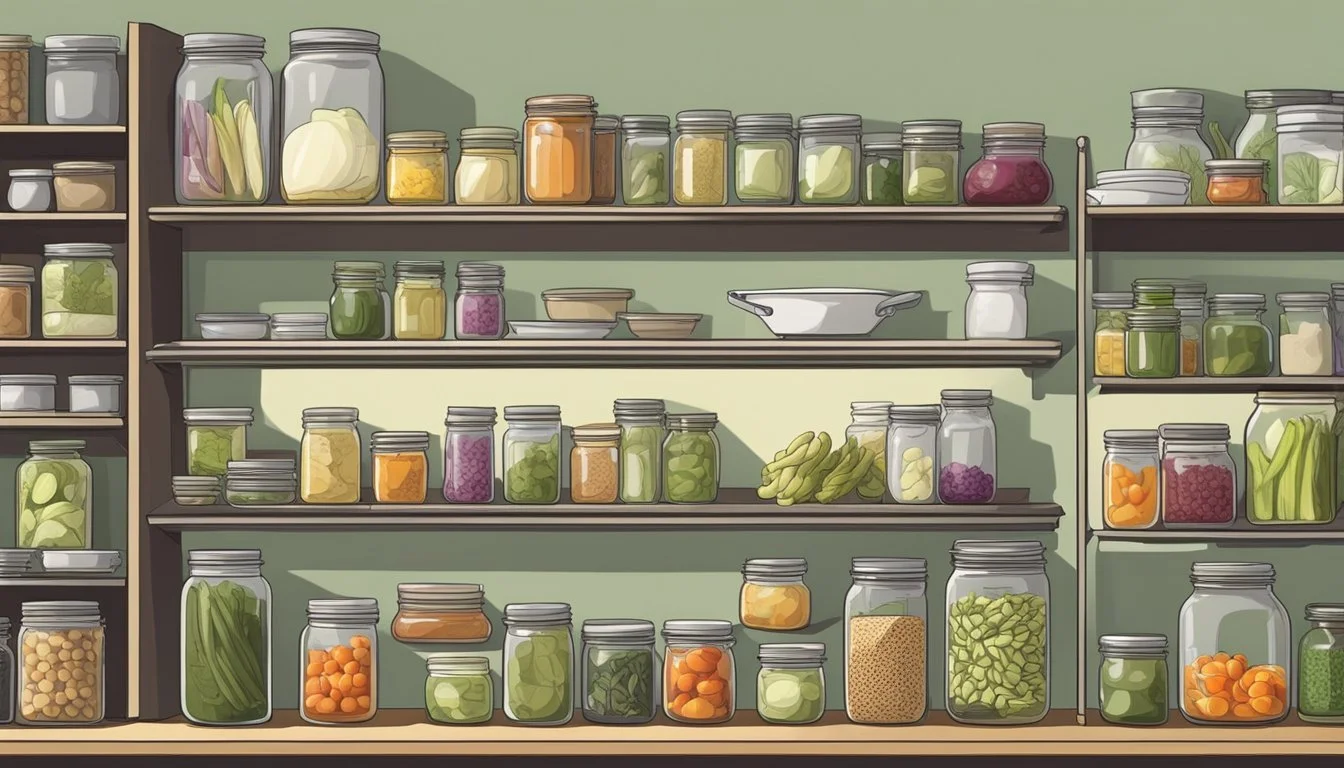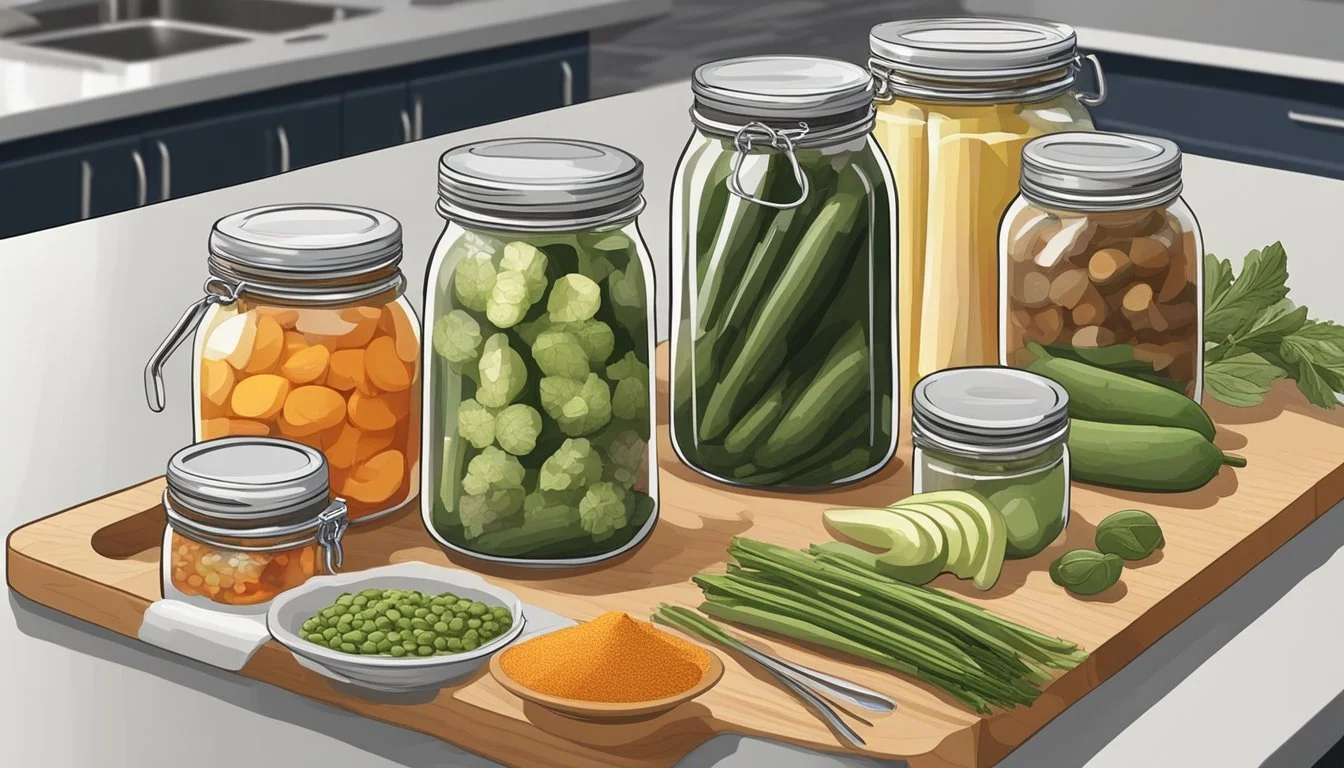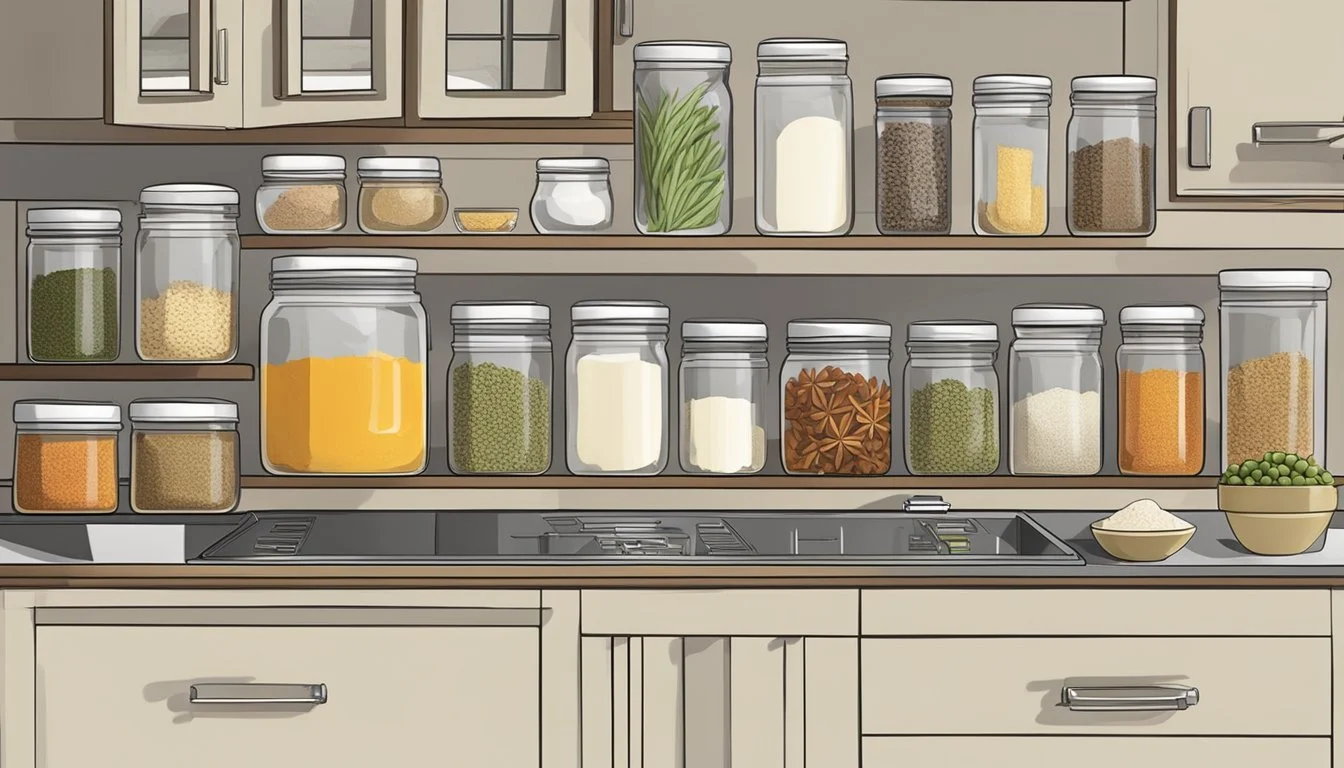How to Create an Organized Kitchen Pickling Station
Your Step-by-Step Guide
Creating an organized kitchen pickling station is a valuable endeavor for enthusiasts of home preservation. With the right setup, one can ensure that all the necessary tools and ingredients are within reach, making the process of pickling both efficient and enjoyable. A well-organized station includes clearly labeled containers for various pickling ingredients such as vinegar, salt, and spices. Containers should be airtight to maintain the freshness of the contents. Designating a specific area in the kitchen for pickling activities also helps to maintain cleanliness and order.
An organized station should have easy access to essential equipment such as jars, lids, and a canning funnel. Adequate space for a cutting board and knife set is imperative for preparing vegetables and fruits. Including a nearby cleaning area with brushes and sponges allows for immediate cleaning of equipment, reducing the likelihood of cross-contamination and keeping the workspace tidy. Moreover, storing equipment in a consistent location supports muscle memory and reduces time spent searching for tools during the pickling process.
Additionally, when setting up a kitchen pickling station, it's essential to consider the workflow. Ensuring there's enough counter space to work comfortably is crucial. Tools and ingredients should be arranged in the order they are used, from preparing the produce to sealing the jars. This logical sequence minimizes unnecessary movement and contributes to a streamlined and systematic pickling experience. With an organized station, the art of pickling becomes a more satisfying and manageable task.
Planning Your Kitchen Pickling Station
When planning a kitchen pickling station, one must take into account the available space, necessary supplies, and the overall layout for efficiency. This section will guide homeowners through organizing an ideal pickling station.
Assessing Your Kitchen Space
Before setting up a pickling station, one should evaluate the kitchen area to identify the most suitable location. It’s important to consider both horizontal and vertical space, ensuring that there is ample room for storage without cluttering the counter space. One might use stackable organizers or shelving units to maximize verticality.
Check for adequate counter space for preparation
Look for potential storage areas that can contain all necessary items
Essential Pickling Supplies and Ingredients
A well-organized pickling station requires a certain set of supplies and ingredients that should always be on hand. Key supplies include jars, lids, a canning funnel, tongs, and a jar lifter. As for ingredients, one will need vinegar, salt, sugar, and a variety of spices. Fresh produce should be stored nearby, preferably in a cool, dry place.
Supplies: Jars, lids, canning funnel, tongs, jar lifter
Ingredients: Vinegar, salt, sugar, spices, fresh produce
Layout and Workflow Considerations
The setup of the pickling station should enable a smooth workflow. This means organizing items in the order they will be used and keeping the station near the stove for ease of access when boiling and sterilizing. Utilize drawer organizers to separate and store smaller items like measuring spoons and spice sachets.
Position the pickling station near the stove for convenience
Use organizers to maintain order within drawers and on shelves
By carefully planning the layout, supplies, and storage, one can create an organized and functional kitchen pickling station tailored to their pickling needs.
Storage Solutions and Organization
An organized pickling station hinges on practical storage solutions and clever organization tactics that make the most of drawers, pantry areas, and your countertop space. It is essential to select the right containers and use dividers to maximize utility and maintain an orderly workspace.
Utilizing Drawers and Pantry Space
The drawer and pantry space should be tailored to house pickling supplies neatly. Drawer dividers and organizers can segregate items like measuring spoons, cutting boards, and spice jars. One should employ drawer trays to keep essential tools within easy reach. For larger pantry areas, consider installing lazy susans in corners to provide rotational storage for supplies such as vinegar, salt, and spices. Transparent bins and canisters also aid in identifying items quickly without the need to rummage.
Drawers: Use drawer dividers to categorize utensils and tools.
Pantry: Install shelving to hold larger items and stackable containers.
Choosing the Right Containers and Dividers
Selecting appropriate containers and dividers plays a crucial role in streamlining the pickling process. Glass jars of various sizes are ideal for both storing pickles and organizing ingredients. Stackable containers should be clear to easily view contents and neatly stack to conserve space. Utilize dividers within drawers to separate and protect fragile equipment such as thermometers or glass tubes.
Containers: Choose glass jars and stackable containers for visibility and space efficiency.
Dividers: Ensure dividers are used to maintain distinct sections for different tools.
Maximizing Countertop and Island Utility
A clutter-free countertop is vital for a functional pickling station. Use trays to group commonly used items together, such as salt, sugar, and vinegar, within arm's reach. If available, a kitchen island can serve as a dedicated prep area with a baking station. Integrating under-counter storage space within the island ensures that all necessary items, like bowls and colanders, are accessible without cluttering the countertop.
Countertop: Keep commonly used items on trays for easy access.
Island: Use the under-counter area for additional storage space for larger items.
Selecting and Organizing Equipment
Creating an efficient kitchen pickling station requires careful selection of appliances and a well-thought organization strategy. Durability, ease of cleaning, and compatibility with pickling processes are crucial factors.
Picking the Right Appliances for Pickling
For pickling, one must choose appliances that support the preservation process. Containers for brining and storing pickles, such as large glass or stainless-steel bowls, are essential. Measuring cups and spoons are vital for accuracy, ensuring the flavor and safety of pickled goods. The selection should focus on non-reactive materials like glass or stainless steel to prevent chemical interactions with acidic ingredients.
A kettle or pot to boil water and brine solutions.
Canning jars with airtight seals to ensure food safety.
Digital scale for precise measurements.
Organizing Small Appliances and Tools
Strategic organization of pickling tools and small appliances maximizes efficiency and accessibility. Using drawer dividers can keep measuring cups and spices well-sorted in the kitchen. Storing whisks, spoons, and similar tools in a utensil holder or a silverware drawer ensures they're always within reach.
Utilize labeled containers on open shelves for storing and accessing various spices quickly.
Install a knife drawer with slots for sharp tools to maintain a safe workspace.
Employ vertical storage, like stackable racks, for baking pans and other bulky items.
Integrate a mixer into the station only if pickling tasks involve extensive mixing.
Investing in adaptable storage solutions from retailers such as Amazon can help maintain an organized pickling area tailored to one's unique kitchen space.
Detailing Your Pickling Station with Accessories
An organized pickling station ensures that all necessary accessories are within easy reach, enhancing both the functionality and the aesthetic of the space.
Using Shelving and Baskets for Additional Storage
Open shelving offers immediate accessibility to pickling essentials such as glass jars, baking supplies, and a variety of sugars. Incorporating baskets on these shelves serves to neatly contain and organize smaller items like spices, toppings, and pantry labels, keeping them handy. Here's a simple guide to optimize storage:
Glass Jars: Store on lower, more accessible shelves for frequent use.
Baking Supplies: Keep at mid-level for occasional access.
Sugars & Toppings: Place in clearly labeled baskets to maintain order.
Decor and Setup Enhancements
One's pickling station can not only be a hub of food storage and flavor, but also a point of allure in the kitchen. For holidays or everyday charm, add a personal touch with decor that complements the room. Adjustable lighting can spotlight the workspace, while the addition of plant life or artwork can make the area inviting. Elevating the practicality of the station, cupboards can be tweaked to house less frequently used pickling equipment, making the most of every space. Here, we focus on the visual and practical enhancements:
Workspace Lighting: Brighten up prep areas for efficiency.
Artistic Labels: Turn functional pantry labels into decorative elements.
Themed Decor: Seasonally update the station’s look for holiday flair.
Implementing a System for Ingredients and Spices
Creating an organized pickling station requires meticulous management of ingredients and spices. Proper storage solutions and clear labeling are essential for maintaining a functional and efficient workspace.
Managing Dry Goods and Fresh Produce
One must store dry goods such as flour and salt essential for pickling in airtight containers to preserve freshness and prevent contamination. These containers should be transparent or labeled clearly to allow for easy identification. They should also be organized by frequency of use; items used regularly should be within reach. Fresh produce should be stored in clear, clean bins and categorized by type. It's important to consider the shelf life of each item and arrange accordingly, with those needing to be used soonest at the front.
Spice Organization and Accessibility
Spices are integral to pickling and should be organized for effortless access. It is recommended to store spices in a dedicated drawer or cabinet near the pickling station. Utilizing shelf racks or tiered storage can enhance visibility and convenience. Grouping spices related to pickling together, such as dill seeds, mustard seeds, and black peppercorns, enables one to find them swiftly. Containers for spices like chile flakes or mustard seeds should be uniform for a streamlined look and function.
Labeling for Efficiency and Convenience
Every container, whether for spices or dry goods, should be clearly labeled with the contents and measurements necessary for pickling recipes. Pantry labels can be employed to mark each container, preferably with the date of storage as well. This not only ensures one can easily locate and identify ingredients, but also helps keep track of their freshness. Labels should be easy to read and water-resistant, given the likelihood of exposure to liquids during the pickling process.
Additional Kitchen Stations Integration
When integrating additional kitchen stations, it’s essential to ensure that each area is tailored for its specific purpose, efficiently arranged, and complements the overall organization of the kitchen.
Setting Up a Coffee and Tea Station
A coffee and tea station should be an inviting corner of the kitchen. Key items include:
Coffee machine or French press
Coffee grinder for fresh beans
A variety of coffee filters suitable for the machine
Storage for coffee beans or grounds, preferably airtight
Electric kettle or stovetop teapot
An assortment of teas within a tea box or organized on a shelf
Small containers or jars for loose tea leaves
Incorporating a Baking Area
For a dedicated baking area, organize the space to enhance workflow:
Baking Area Furnishings:
Storage for baking sheets, pans, and muffin tins
Spot for stand mixer or hand mixer
Dry Ingredient Organization:
Shelves for ingredients like flour, sugar, and baking powder, each in labeled containers
Section for commonly used measuring spoons and cups
Arranging Stations for Regular Meals and Special Occasions
Design stations to cater to daily meals and expand to accommodate special occasions:
Oatmeal Station Setup:
Containers for various oats and toppings
Quick-access space for bowls and utensils
Flexible Station Design:
Mobile carts or modular shelving can adapt a space from daily use to party mode
Appropriate dinnerware and serving tools for special meals should be within easy reach
Maintenance and Upkeep
A well-organized kitchen pickling station not only streamlines the pickling process but also maintains the quality and lifespan of the tools and equipment involved. Proper maintenance and regular upkeep play a pivotal role in ensuring a clean and efficient station.
Regular Cleaning Rituals
Daily Cleaning: After each pickling session, one should always wipe down surfaces, clean utensils such as spatulas, and wash any used mugs or containers. It's essential to ensure that no food residue remains, which could lead to bacterial growth.
Weekly Deep-Clean: On a weekly basis, a thorough cleaning of the station, including all appliances like blenders, should be performed. Use a solution of equal parts water and vinegar to sanitize surfaces without leaving any harmful residues.
Managing Inventory and Restocking
Inventory Checks: Regular inventory assessments help to keep track of supplies. It is advisable to take inventory at least once a month to ensure that all necessary items are at hand and to identify any low-stock items.
Restocking Process:
Containers: Check the stock of jars, lids, and bottles.
Ingredients: Restock pickling salts, vinegars, and spices.
Equipment: Ensure that there are enough clean spatulas, mugs, and other equipment for uninterrupted pickling activities.
By implementing these maintenance practices, one can preserve the functionality and cleanliness of their home pickling station, thus enhancing the overall pickling experience.








